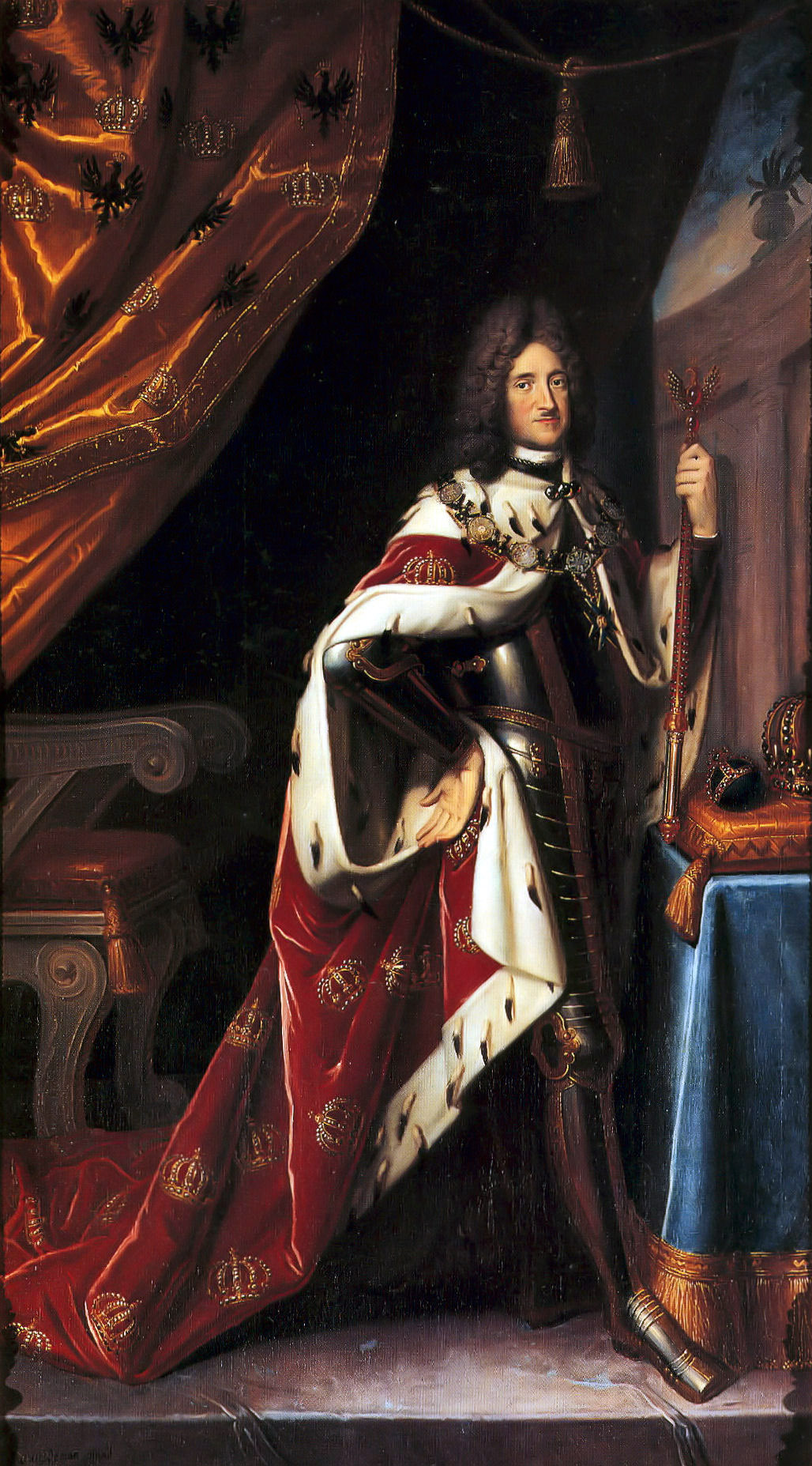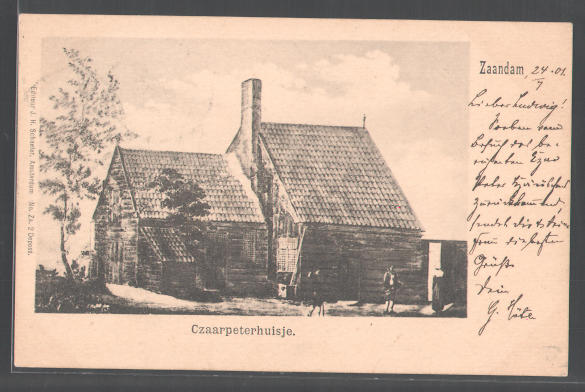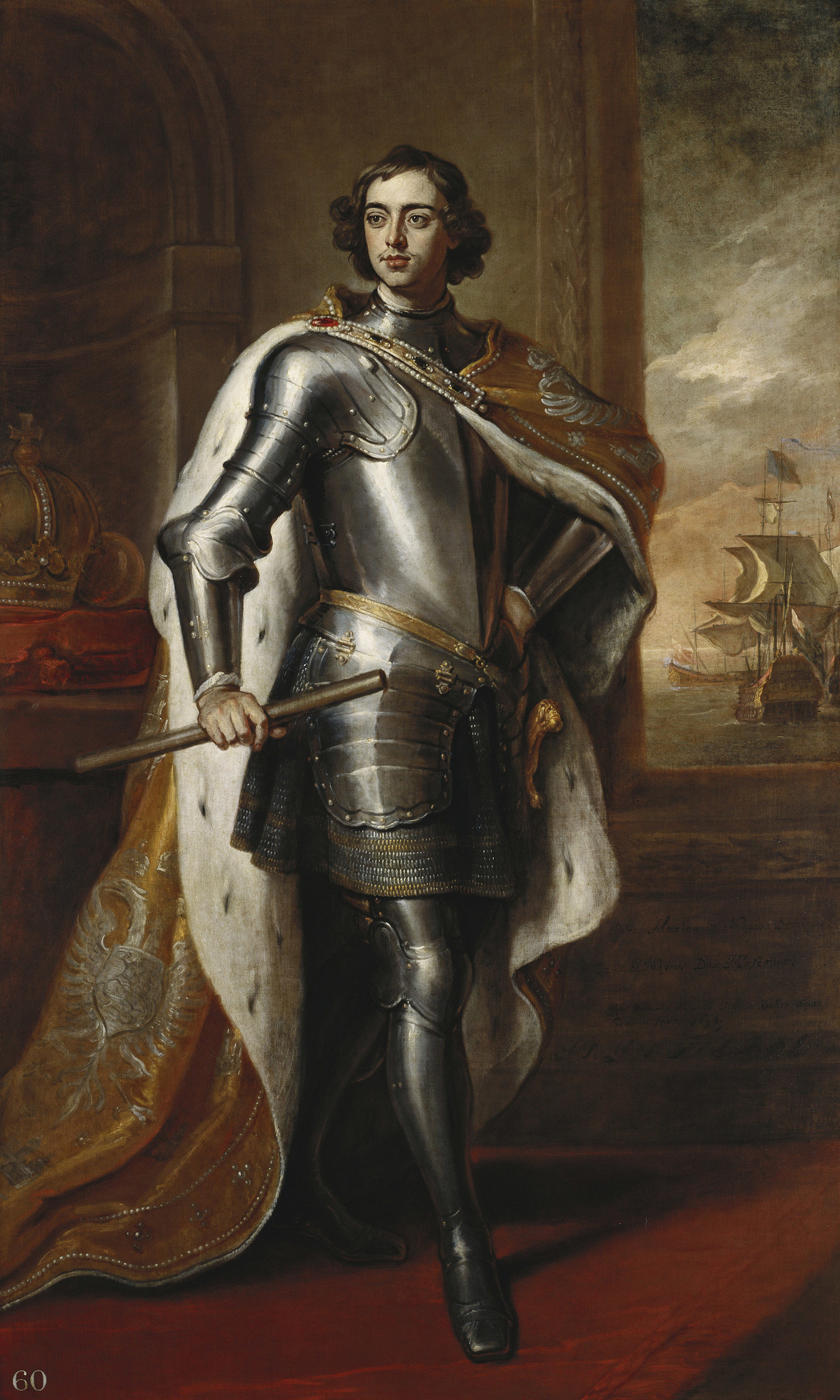The Call of the West
 |
| Andrei Matveyev |
Peter named
Lefort[i] as head of the Great
Embassy. One of Lefort’s two colleagues, Golovin, was a professional diplomat,
to whom Peter entrusted conduct of foreign affairs. Voznitsyn also had previous
diplomatic experience. Prominent among the noblemen and volunteers[ii] accompanying the embassy
were Peter’s childhood friends Andrei Matveyev[iii] and Alexander Menshikov.
With them
went Pyotr Mikhailov. To address the Czar as anything else, or to reveal that
Peter was the Czar, or mention that he was accompanying the embassy was
punishable by death.
To govern
Russia in his absence Peter established a three man council, consisting of his
uncle Lev Naryshkin, Prince Boris Galitzyne and Prince Peter Prozorovsky, the
Czar’s treasurer. The man who actually ran the country, subordinate to these
three, was Prince Fedor Rodomanovsky, the Governor General of Moscow.
Just before
the embassy’s departure three men were arrested; Ivan Tsykler[iv], colonel of one of the
Streltsy regiments, and two boyars. The three men had been fulminating against
the Czar’s perceived desertion of his wife and the Kremlin and of his
consorting with foreigners. Their grumbles had been made too publicly and Peter
was furious. The news of the arrest was brought to the Czar dining with his
friends in the German Suburb; in his diary Gordon noted
‘A merry night has been
spoiled by an accident of discovering treason against his Majesty.’[v]
The three traitors were bloodily executed in Red
Square, having touched a raw nerve in the Czar’s character.
A Czar Abroad
The embassy
departed Moscow on 20th March 1697, leaving Russia via the Swedish province of Livonia[vi]. Peter studied the new Swedish
fortress in Riga with great interest. The party then travelled through the
Duchy of Courland[vii], where Peter was entertained
lavishly by the reigning Duke, one of whose ministers wrote;
‘Open tables were kept
everywhere with trumpets and music attended by feasting and excessive drinking
as if his Tsarish Majesty had been another Bacchus. I have not yet seen such
hard drinkers.’[viii]
Frederick of Brandenburg
The Russians
were met by Frederick III[ix], the Elector of Brandenburg when
they travelled on from Courland. Frederick was anxious to sign an alliance
against the Swedes but Peter, still at war with the Ottoman Empire, was
unwilling to provoke the Swedes at his back. Frederick and Peter eventually
signed a mutual defence treaty.
Peter
lingered in Brandenburg waiting to discover who was to be Poland’s next king[x]. The news that Augustus of Saxony had been elected king of Poland, in
preference to the French Prince de Conti, arrived in mid-August. Relieved of
his fear that the Poles, under a French king, would withdraw from the fight
against the Ottomans, Peter planned his departure to the Netherlands by sea. These
plans were thwarted by the presence of a French squadron in the Baltic and
reluctantly Peter travelled by land across Germany.
Sophia of Hanover
He was
ambushed by Sophia, the Electress of Hanover[xi] and her daughter at Koppenbrügge,
both were desperate to meet Peter. He was persuaded to join them for dinner,
which lasted for four hours; after dining Peter was persuaded to dance with the
first Western women he had ever got close to. He was surprised by their
corsets; he amused mother and daughter by his comment,
‘These German women have
devilish hard bones.’[xii]
After the
dinner Peter set out down the Rhine on the last leg of his journey to the
Netherlands, leaving the remainder of his entourage to follow at a more normal
pace.
In the Netherlands
Peter's House
On the 18th
August Peter arrived in the small town of Zaandam, a town renowned for
shipbuilding. In his impatience to arrive he bypassed Amsterdam. It was
arranged that Peter would stay in the home[xiii] of a widow who lived next door to a
Dutchman, Gerrit Kist, whom Peter had known in Moscow.
Peter signed
on as a common workman in one of the shipyards; during the day he worked on the
ships; in the evenings he visited the wives and parents of Dutch workers in
Russia. He bought a boat, haggling over the price and took it sailing.
The news of
his identity spread throughout the country and soon crowds were descending upon
the town, eager to see the Czar of Russia. His longed for stay in Zaandam
lasted one week. Instead the preternaturally shy Peter moved to Amsterdam; at
the time the greatest port on earth and the wealthiest city in the world.
It was
suggested that Peter work in the docks of the East India Company, whose shipyards were enclosed and
barred to the public. To assist Peter’s shipbuilding education the company’s
board ordered the laying of a keel for a new frigate and allocated Peter the
use of the company’s master ropemaker’s house, within the shipyard walls. The
ship was named the Apostles Peter and Paul.
Peter and
ten of his volunteers started work immediately, while the remainder were
allocated to jobs in rope making, sail making, mast turning, block and tackle
construction and seamanship. Prince Alexander of Imeritia[xiv] was despatched to den Haag to study
artillery.
In France
the Duchesse d’Orléans wrote of Peter to her aunt, the
Electress of Hanover;
‘If he should fall on hard
times, he will never starve to death, for he knows fourteen crafts. The great
man here[xv]
made fun of him for working with a shipwright in Holland and helping to build
ships.’[xvi]
Peter
visited factories, sawmills, spinners, workshops, museums, botanical gardens
and laboratories. He met with architects and sculptors and took drawing and
sketching lessons. He attended dissections by a renowned professor of anatomy
and met botanists and the inventor of the microscope. On his free days Peter
wandered around Amsterdam, once stopping to interrogate an itinerant dentist,
later practising on his servants. His curiosity was insatiable.
Peter’s
ministers in Moscow were reluctant to act without their master’s authority and
he was inundated with letters and requests. Now thousands of miles away from
home, Peter began to show more interest in ruling his country than ever before.
He attempted to deal with his correspondence every Friday.
Peter and William
William III
Peter was
invited to meet King William III at Utrecht. Of all the European leaders
William was Peter’s foremost hero. His Dutch, German and other foreign friends
in the German Suburb had long admired the dauntless William. An aficionado of
all things Dutch Peter was greatly moved by this meeting, informing his host;
‘I have accomplished my wish
and I am sufficiently rewarded for my journey by having enjoyed your presence.
It is your military genius that has inspired my sword, and the noble emulation
of your exploits has aroused in my heart the first thoughts I ever had of
enlarging my empire.’[xvii]
Peter’s proposal
that he and William join in an anti-Turk alliance met no favour from a man
committed to fighting French hegemony in Europe. The Great Embassy presented
their proposals to the States General, but the focus of the Dutch politicians
was on western not eastern Europe. Burdened with debt and the need to replenish
their own navy; the Dutch refused the request to help the Russians build and
arm seventy warships and more than one hundred galleys.
Cornelius Cruys
When he was
not working in the shipyards, Peter travelled across the Netherlands. Early on
in his visit Peter met Admiral Gilles Schey[xviii]. Schey organised a mock naval battle
for Peter’s edification; held at Ij. Peter tried to lure Schey back to Russia;
Schey refused the offer but suggested an alternative, Admiral Cornelius Cruys[xix]. A reluctant Cruys was persuaded by
Schey and other Dutch prominente to accept the post, understanding that he
would be in a position to influence Russian trade with the Netherlands.
Peter and
William met on numerous occasions; the meetings between these two very private
individuals were unrecorded. Peter had become dissatisfied with the way the
Dutch built their ships; each shipwright having his own quirky ways. At a
meeting with William, Peter expressed a wish to visit England to look at the
way the English built their ships. He arrived in England on 10th
January 1698
Peter in England
William sent
an escort to ferry Peter across the channel; he travelled with Menshikov and a
number of the volunteers, leaving
Lefort and the Great Embassy in the Netherlands. He met William a number of
times; observed a ball being held in honour of Princess Anne, the heir apparent and spent much of his free time roaming
around London, visiting workshops and factories.
Peter
discussed religion with the leaders of the established church and purchased a
watch and learnt how to dismantle, repair and reassemble his new possession.
His interests seemed boundless, but his main concentration was on the
acquisition of shipbuilding skills. Once again he took to working in the shipyards,
this time at Deptford.
Plan of Sayes Court
While
working at Deptford Peter stayed at the diarist John Evelyn’s house, Sayes
Court; the place was almost trashed by Peter and his servants. Evelyn’s servant
despaired;
‘The Czar lies next your
library, and dines in the parlour next your study.’[xx]
When Peter
left Evelyn sent in a bill for £150[xxi] to repair and clean his
house.
In London
Peter visited the arsenal, the Royal Mint and the Royal Society; these visits
were to help inspire his vision of a Russian state based on modern Western
ideals. He also visited the theatre on numerous occasions and indulged himself
in an affair with a Mrs Cross, an actress. He had his portrait painted by Godfrey Kneller and presented the painting to William.
Peter the Great by Kneller
Peter left
England on 23rd April 1698, giving William a ruby valued at £10,000[xxii], wrapped in a piece of
brown paper. He returned to the Netherlands on the Royal Transport, a present
from William[xxiii].
Bibliography
Natasha’s
Dance – Orlando Figes, Penguin Books Ltd 2002
A Woman’s
Life in the Court of the Sun King – translated Elborg Forster, The John Hopkins
University Press 1984
Russia and
the Russians – Geoffrey Hosking, The Penguin Press 2001
William and
Mary – John van der Kiste, Sutton Publishing 2003
Peter the
Great – Robert K Massie, Abacus 1992
William and
Mary – Henri & Barbara van der Zee, History Book Club 1973
www.wikipedia.en
[i]
By now also Governor-General of Novgarod
[ii]
Those who had been chosen by Peter to learn shipbuilding in the west
[iii]
Son of Artamon Matveyev murdered in front of Peter in the Streltsy uprising
[iv]
Who had been expecting great things of his transfer of allegiance from Sophia,
was angered by a posting to Azov
[v]
Peter the Great - Massie
[vi]
On the eastern shores of the Baltic
[vii]
In western Latvia
[viii]
Peter the Great - Massie
[ix]
Later to be Frederick I of Prussia
[x]
Jan Sobieski had died in June 1696
[xii]
Peter the Great - Massie
[xiii]
Now a museum, Peter returned here several times
[xiv]
Part of modern Georgia around the Rioni river
[xv]
Louis XIV
[xvi]
A Woman’s Life in the Court of the Sun King - Forster
[xvii]
William and Mary – Henri & Barbara van der Zee
[xix]
Who was to become the commander of the Russian Baltic fleet
[xx]
William and Mary – Henri & Barbara van der Zee
[xxi]
In 2010 worth £15,300.00
using the retail price index £287,000.00
using average earnings www.measuringworth.com
[xxii]
In 2010 worth £1,020,000.00
using the retail price index or £19,100,000.00
using average earnings www.measuringworth.com
[xxiii]
Presented on 2nd March 1698



_(lighter).jpg)



I have to say he must be one of a very few monarchs in all of history capable of doing a day's honest work.
ReplyDelete